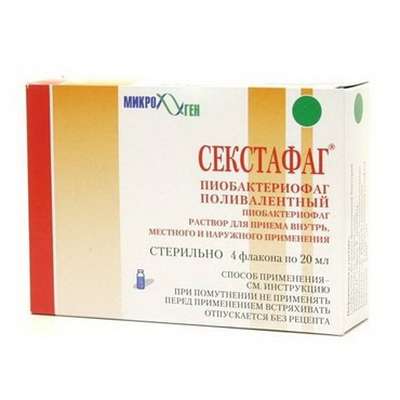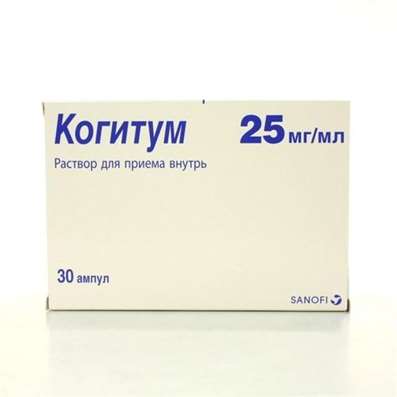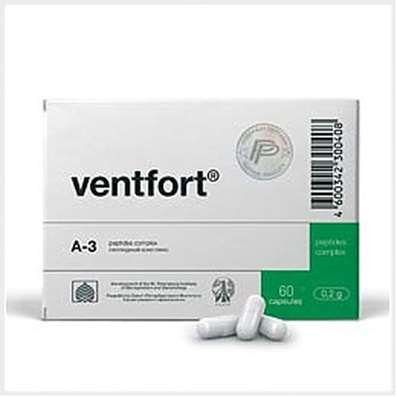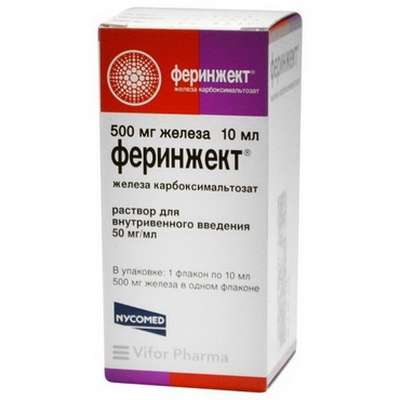Instruction for use: Nakom
I want this, give me price
Dosage form: tablets
Active substance: Levodopa + Carbidopa*
ATX
N04BA02 Levodopa and a decarboxylase inhibitor
Pharmacological group:
Anti-Parkinsonics (dopamine precursor + decarboxylase peripheral inhibitor) [Antiparkinsonics in combinations]
The nosological classification (ICD-10)
G20 Parkinson's disease: A trembling paralysis; Idiopathic Parkinsonism; Parkinson's disease; Symptomatic Parkinsonism
G21 Secondary Parkinsonism: Medicinal Parkinsonism; Parkinsonism; Parkinsonism symptomatic; Disorders of extrapyramidal system; Parkinson's Syndrome
Composition
Tablets - 1 table.
Active substances:
Levodopa 250 mg
Carbidopa 25 mg
Auxiliary substances: pregelatinized starch - 45 mg; Corn starch - 6.5 mg; Blue dye (indigotin E132) - 0, -72 mg; Magnesium stearate 4.2 mg; MCC - up to 380 mg
Description of dosage form
Tablets biconvex oval-shaped blue with white patches and separate impregnations of dark blue with a notch on one side.
Pharmachologic effect
Mode of action - antiparkinsonian, dopaminergic.
Pharmacodynamics
Levodopa weakens the symptoms of Parkinson's disease by increasing the content of dopamine in the brain. Carbidopa, which does not penetrate the BBB, prevents extracerebral decarboxylation of levodopa, thereby increasing its amount entering the brain and converting there to dopamine.
NakomŽ exerts a more pronounced therapeutic effect than levodopa, provides long-term maintenance of the therapeutic concentration of levodopa in plasma at doses that are about 80% lower than those required when one levodopa is used.
The effect of the drug is manifested during the first 24 hours after the start of the procedure, sometimes after the first dose. The maximum effect is achieved within 7 days.
Pharmacokinetics
Levodopa. Levodopa is rapidly absorbed from the digestive tract and is actively metabolized. Despite the fact that more than 30 different metabolites are formed, mainly levodopa is converted to dopamine, epinephrine, norepinephrine.
After oral administration of patients with Parkinson's disease, a single dose of levodopa Tmax is 1.5-2 hours and is maintained at the therapeutic level for 4-6 hours. Metabolites are rapidly excreted in the urine: about 1/3 of the dose is excreted within 2 hours.
T1 / 2 levodopa in blood plasma is about 50 minutes. When combined with carbidopa and levodopa T1 / 2 levodopa increases to about 1.5 hours.
Carbidopa. After oral administration of a single dose of Tmax carbidopa is 1.5 to 5 hours in patients with Parkinson's disease.
Metabolised in the liver.
Excretion in the urine of the unchanged drug is mostly completed within 7 hours and is 35%.
Among the metabolites excreted in the urine, the main are alpha-methyl-3-methoxy-4-hydroxyphenylpropionic acid, as well as alpha-methyl-3,4-dihydroxyphenylpropionic acid. They make up about 14 and 10% of excreted metabolites, respectively. In smaller amounts, two other metabolites are found. One of them is identified as 3,4-dihydroxyphenylacetone, the other is preliminarily as N-methyl-carbidopa. The content of each of these substances is not more than 5% of the total amount of metabolites. In the urine, unchanged carbidopa is also found. Conjugates have not been identified.
Effect of carbidopa on the metabolism of levodopa. Carbidopa increases the concentration of levodopa in the blood plasma. With the previous intake of carbidopa, the concentration of levodopa in the blood plasma increases approximately 5-fold, and the time of maintenance of therapeutic concentrations in the plasma increases from 4 to 8 hours. With the simultaneous administration of carbidopa and levodopa, similar results were obtained.
When taking a single dose of levodopa in patients with Parkinson's disease who previously took carbidopa, T1 / 2 for levodopa increases from 3 to 15 hours. The concentration of levodopa increases at the expense of carbidopa by at least 3 times. The concentration of dopamine and homovanilinic acid in blood plasma and in urine decreases with the preliminary intake of carbidopa.
Indication for the Nakom
Treatment of Parkinson's Disease and Parkinson's Syndrome.
Contraindications
Hypersensitivity to any of the components of the drug;
Simultaneous administration with non-selective MAO inhibitors (the taking of these drugs should be completed at least two weeks before the start of treatment with NacomŽ);
Angle-closure glaucoma;
Melanoma or suspicion of it;
Skin diseases of unknown etiology.
With caution (requires a more careful selection of doses and control of safety of treatment):
Myocardial infarction with rhythm disturbance (in the anamnesis);
Heart failure and other severe CAS;
Severe lung diseases, including bronchial asthma;
Epileptic and other convulsive seizures (in the anamnesis);
Erosive and ulcerative lesions of the digestive tract (due to the possibility of bleeding from the upper gastrointestinal tract);
Diabetes mellitus and other decompensated endocrine diseases;
Severe renal and / or hepatic insufficiency;
Open angle glaucoma.
Use in children. Safety of the drug for young and middle-aged children is not established and its use for treatment of children under 18 is not recommended.
Application in pregnancy and breastfeeding
Pregnancy. The effect of NacomŽ on the course of pregnancy in women is unknown, but it should be noted that the combination of levodopa and carbidopa causes visceral and skeletal changes in animals. Therefore, the use of the drug is only possible if the expected benefit of treatment for the mother exceeds the potential risk to the fetus.
Lactation period. It is not known whether levodopa and carbidopa stand out with human milk. There is one report on the excretion of levodopa with breast milk in a nursing mother with Parkinson's disease. Therefore, due to possible serious adverse effects of the drug on the newborn, it should be decided either to stop feeding or to stop using NacomŽ, taking into account the importance of the drug for the mother.
Side effects
The most common side effects are dyskinesias, including chorea-like, dystonic and other involuntary movements, as well as nausea. Early signs, on the basis of which a decision can be made to reduce the dose, can be considered muscle twitching and blepharospasm.
Other side effects
The body as a whole: syncopal conditions, chest pain, anorexia.
CVS: arrhythmia and / or palpitation, orthostatic effects, including episodes of increase or decrease in blood pressure, phlebitis.
The digestive system: vomiting, gastrointestinal bleeding, exacerbation of duodenal ulcers, diarrhea, darkening of saliva.
The system of hematopoiesis: leukopenia, anemia (including hemolytic), thrombocytopenia, agranulocytosis.
Allergic reactions: angioedema, hives, skin itching, Shenlaine-Henoch disease.
Nervous system / Psychiatry: malignant neuroleptic syndrome (see "Special instructions"), episodes of bradykinesia ("on-off" -syndrome), dizziness, drowsiness, paresthesia, episodes of psychotic conditions, including illusions, hallucinations and paranoid thinking, depression with Development of suicidal intentions or without such, dementia, sleep disorder, agitation, confusion, increased libido.
In rare cases, the development of seizures has been reported, but a causal relationship with the administration of NacomŽ has not been established.
Respiratory organs: dyspnea.
Skin: alopecia, rash, darkening secret of sweat glands.
Urogenital system: darkening of urine.
Below are listed other side effects that arose as a result of taking levodopa, which means that they can be observed when NacomŽ is used:
Gastrointestinal tract: dyspepsia, dry mouth, bitterness in the mouth, sialorrhea, dysphagia, bruxism, hiccups, pain and discomfort in the abdomen, constipation, flatulence, burning sensation of the tongue.
Metabolism: decreased or increased body mass, swelling.
CNS: weakness, fainting, fatigue, headache, asthenia, decreased mental activity, disorientation, ataxia, numbness, increased tremor of hands, muscle cramps, trismus, activation of latent Bernard-Horner syndrome, insomnia, anxiety, euphoria, psychomotor agitation, instability Gait.
Organs of the senses: diplopia, blurred vision, dilated pupils, oculogic crises.
Genitourinary system: urinary retention, urinary incontinence, priapism.
Other side effects: hoarseness, malaise, hot flushes to the skin of the face, neck and chest, dyspnea, malignant melanoma (see "Contraindications").
Changes in laboratory parameters: increased activity of alkaline phosphatase, ACT, ALT, lactate dehydrogenase, increased bilirubin, urea nitrogen in plasma, hypercreatininaemia, hyperuricemia, Coombs positive test.
There was reported a decrease in hemoglobin and hematocrit, hyperglycemia, leukocytosis, bacteriuria, erythrocyturia.
Preparations containing levodopa + carbidopa may cause a false positive reaction to ketone bodies in the urine if test strips are used to determine ketonuria. This reaction will not change after boiling urine samples. False negative results can be obtained using glucose oxidase method of glucosuria determination.
Interaction
Precautions should be taken if, together with NacomŽ, the following medicines are prescribed:
Hypotensive drugs. In patients receiving some antihypertensives, the addition of NacomŽ caused orthostatic symptomatic hypotension. Therefore, at the beginning of treatment with NacomŽ, an adjustment of the dose of an antihypertensive drug may be required.
Antidepressants. With the simultaneous use of levodopa with MAO inhibitors (with the exception of MAO B inhibitors), there may be a disturbance of blood circulation (administration of MAO inhibitors should be stopped within 2 weeks). This is due to the accumulation under the influence of levodopa dopamine and norepinephrine, the inactivation of which is inhibited by MAO inhibitors. As a result, there is a high probability of excitation, increased blood pressure, tachycardia, facial flushing and dizziness.
There have been isolated reports of adverse reactions involving increased blood pressure and dyskinesia, in the case of combined use of tricyclic antidepressants with NacomŽ (for patients receiving MAO inhibitors, see Contraindications).
Preparations of iron. Bioavailability of carbidopa and / or levodopa is reduced when the patient simultaneously uses iron sulfate or iron gluconate.
Other drugs. With simultaneous application of levodopa with beta-adrenostimulyatorami, ditiline and means for inhalation anesthesia, it is possible to increase the risk of heart rhythm disturbances.
Dopant D2 receptor antagonists (eg, phenothiazines, butyrophenones and risperidone), as well as isoniazid, can reduce the therapeutic effect of levodopa.
There are reports of a blocking of the positive therapeutic effect of levodopa in Parkinson's disease as a result of taking phenytoin and papaverine. Patients taking these drugs concomitantly with NacomŽ require careful monitoring to detect the decrease in therapeutic effect in a timely manner.
Lithium preparations increase the risk of dyskinesia and hallucinations; Methyldopa increases side effects, simultaneous use of tubocurarine increases the risk of arterial hypotension.
Absorption of levodopa may be impaired in some patients on a high protein diet, since levodopa competes with certain amino acids.
Carbidopa inhibits the action of pyridoxine (vitamin B6), which accelerates the metabolism of levodopa to dopamine in peripheral tissues.
Dosing and Administration
Inside.
The optimal daily dose of the drug should be determined by careful selection for each patient. The shape of the tablet allows you to divide it into two parts with minimal effort.
General provisions. Dosage should be selected individually for each patient, which may require both adjusting the individual dose and the frequency of taking the medication. Studies show that peripheral dopa-decarboxylase is saturated with carbidopa when administered last at a dose of about 70-100 mg per day. Patients who receive less carbidopa may experience nausea and vomiting.
In the case of the administration of NacomŽ, the administration of standard drugs for the treatment of parkinsonism, with the exception of those containing one levodopa, may be continued, with their doses to be re-selected.
Usual initial dose. The dose is selected by the doctor in accordance with the disease and the patient's response to treatment. The initial dose of NacomŽ 250/25 is 1/2 table. 1 or 2 times a day. However, such dosage may not provide the optimum amount of carbidopa that is required by the patient. Therefore, if necessary, add 1/2 table. Of NacomŽ 250/25 every day or every other day until the optimal effect is achieved.
The effect is observed on the first day, and sometimes after the first dose. The full effect of the drug is achieved in terms of up to seven days.
Transition from levodopa preparations. Levodopa should be discontinued at least 12 hours prior to treatment with NakomŽ (24 hours after levodopa with prolonged action). The daily dose of NacomŽ should provide approximately 20% of the previous daily dose of levodopa.
For patients taking more than 1500 mg of levodopa, the initial dose of NacomŽ is 250/25 mg 3 or 4 times a day.
Supportive therapy. If necessary, the dose of NacomŽ can be increased by 1/2 table. Or 1 tab. Every day or every other day until the maximum dose is reached - 8 tablets. per day. The experience of taking a daily dose of carbidopa exceeding 200 mg is limited.
The maximum recommended dose. The maximum recommended dose is eight tablets of NacomŽ per day (2 g of levodopa and 200 mg of carbidopa). This is approximately 3 mg of carbidopa and 30 mg of levodopa per kilogram of body weight with a body weight of 70 kg.
Overdose
In case of an overdose of NacomŽ, the severity of side effects increases (see "Side effects").
Treatment: careful monitoring and ECG monitoring should be provided to the patient in order to identify possible arrhythmias, if necessary, adequate antiarrhythmic therapy should be provided. It is necessary to take into account the possibility that along with the drug NakomŽ the patient took other medications.
Special instructions
As with levodopa, when NakomŽ is prescribed to patients who have had myocardial infarction and who have atrial, nodular, or ventricular arrhythmias, a thorough preliminary examination is necessary. These patients need to monitor cardiac activity, with particular care - with the appointment of the first dose and during the selection of doses.
Patients with open-angle glaucoma NacomŽ should be administered with caution and provided that intraocular pressure is continuously monitored during treatment.
Since both therapeutic and side effects are more likely to occur with a combination of carbidopa and levodopa than one levodopa, careful monitoring is necessary during the dose selection period for patients. In particular, NacomŽ more often than levodopa causes involuntary movements. The appearance of involuntary movements may require a dose reduction. An early indication of an excessive dose in some patients may be blepharospasm.
If the therapeutic response to levodopa is unstable, and the manifestations and symptoms of Parkinson's disease are not controlled throughout the day, switching to NacomŽ usually helps to reduce fluctuations in the response to drugs.
Due to the reduction of certain negative effects caused by the preparation of levodopa, NacomŽ provides patients with an adequate reduction in the symptoms of Parkinson's disease.
NakomŽ is also indicated for patients with Parkinson's disease taking vitamin preparations containing pyridoxine hydrochloride (vitamin B6).
NacomŽ is not recommended for the treatment of extrapyramidal disorders caused by medications.
NacomŽ may be given to patients who are already receiving drugs containing only levodopa, but the use of levodopa should be discontinued at least 12 hours before treatment with NacomŽ. NakomŽ should be given in doses that provide approximately 20% of the previous dose of levodopa (see "Dosage and Administration").
In patients who have previously taken levodopa, dyskinesia can be observed, because Carbidopa allows more levodopa to reach the brain, and thus a greater amount of dopamine is formed. The appearance of dyskinesia may require a dose reduction.
Like levodopa, NacomŽ can cause involuntary movements or mental disorders. It is assumed that these reactions are due to an increase in the content of dopamine in the brain. These phenomena may require a dose reduction. All patients taking NacomŽ should be supervised in connection with the possibility of developing a depressive state with suicidal tendencies. Patients in whom psychoses were observed require a cautious approach in the selection of therapy.
Precautions should be taken in the simultaneous administration of psychotropic drugs and NacomŽ (see "Interaction").
With the sudden withdrawal of antiparkinsonian drugs, a symptom complex resembling a malignant neuroleptic syndrome, including muscle rigidity, fever, mental disorders and an increase in serum CFC concentration, was described.
Therefore, a careful examination of patients during a period of a sharp reduction in the dose of NacomŽ for its withdrawal, especially if the patient receives antipsychotics, is necessary. As with levodopa, periodic monitoring of liver function, hematopoietic system, CCC and kidney is recommended during prolonged treatment with NacomŽ.
If general anesthesia is required, NacomŽ can be taken as long as the patient is allowed oral fluid and medication.
If the treatment is temporarily interrupted, NacomŽ may be resumed in the usual dosage as soon as the patient is able to take the drug orally.
Release form
Pills. For 10 tab. In the blister (IIBX / aluminum); 10 blisters in a pack of cardboard.
Manufacturer
Lek dd, Verovshkova, 57, Ljubljana, Slovenia, in cooperation with Merck & Co, Whitehouse Station, New Jersey, U.S.A.
Terms of leave from pharmacies
On prescription.
Storage conditions of the drug Nakom
In dry, the dark place at a temperature of no higher than 25 ° C.
Keep out of the reach of children.
Shelf life of the drug Nakom
3 years.
Do not use after the expiry date printed on the package.

 Cart
Cart





